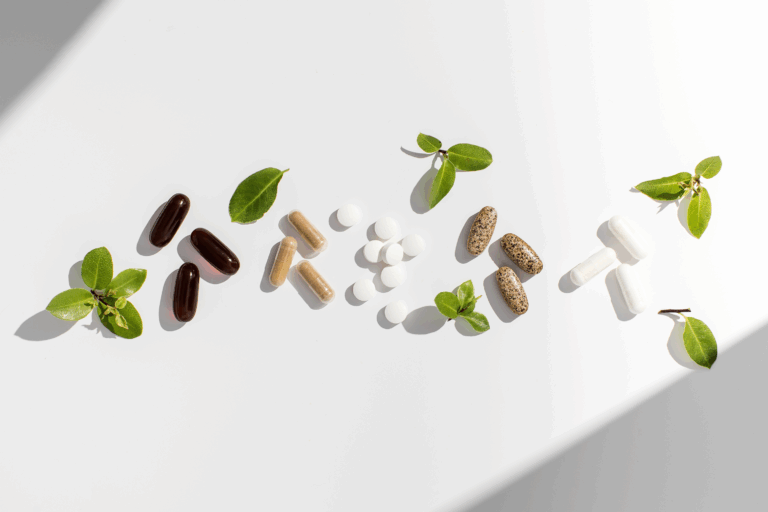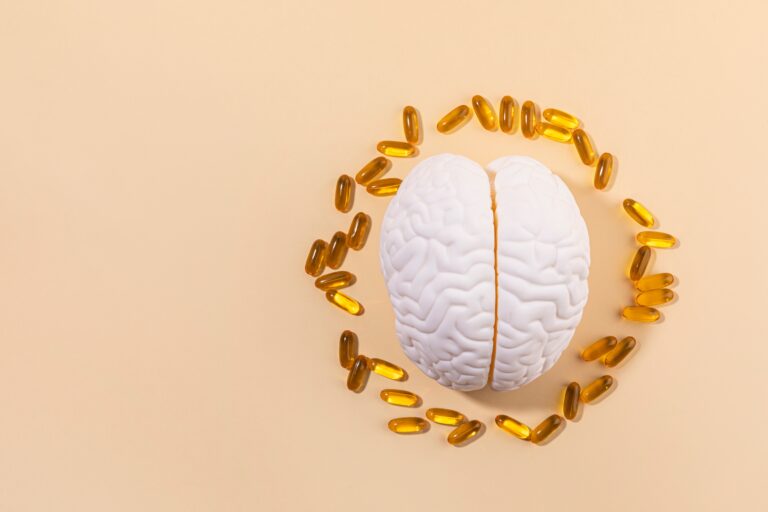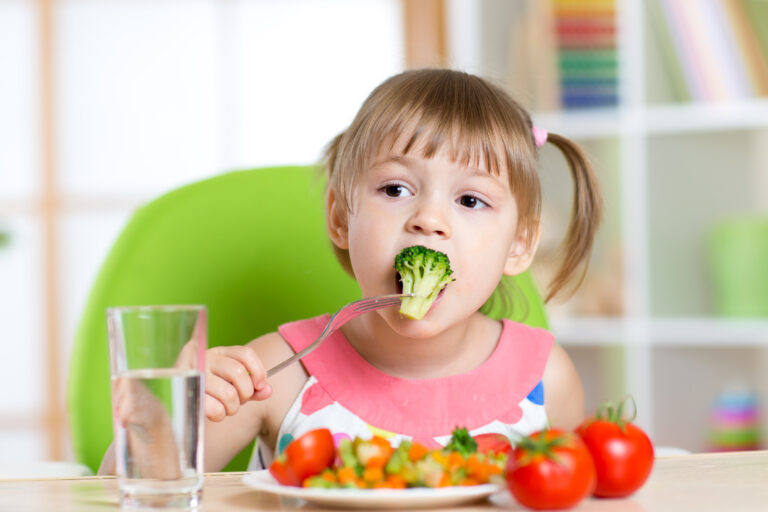The Impact of Stress on Gut Health and Detoxification
The Impact of Stress on Gut Health and Detoxification
The gastrointestinal (GI) system is critical to human health, aiding in the digestion and absorption of essential nutrients, modulating the immune system, and detoxifying potentially dangerous compounds.1 The bacteria that reside in the GI system as part of the gut microbiome are integral to the physiological roles of the GI system. When the gut microbiome is “healthy,” it helps detoxify compounds such as environmental pollutants, toxic metals, and xenobiotics.1
The Role of Microbiota in Detoxification
Over the course of a lifetime, humans may encounter anywhere from one to three million foreign compounds.2 But the body has systems in place to handle toxin encounters. In a three-step process, foreign substances are processed and excreted from the body.1 In the first step, phase I enzymes activate compounds, making them more reactive than the original toxin. Next, phase II enzymes conjugate various chemical structures to the activated toxin in order to make it more water-soluble for phase III, excretion.1 The liver is the primary site of phase I and II enzymes, meaning toxins are absorbed in the gut then enter the bloodstream where they travel to the liver for processing.1 In some cases, toxic compounds are poorly absorbed or they are strongly bound to a protein – preventing their digestion – and remain in the intestines where they are exposed to gut microbiota.1
Just as liver enzymes have specific roles in the detoxification process, so do microbiota in the GI system. Bacteria play a role in detoxification by:1
- altering the half-life of toxic compounds which affects how long they stay in the body
- influencing biological effects of toxins on the human body
- changing the rate and extent that toxins can get into circulation and affect peripheral tissues
- neutralizing potential carcinogens and toxic compounds
- enhancing the excretion of toxins
- modulating expression of detoxification enzymes in the liver
- producing metabolites from the breakdown of steroid hormones, dietary protein, and herbal medicines that affect phase I enzyme expression
The effect of specific strains of bacteria in detoxification processes vary and depend on the toxin encountered. In some cases, a specific type of bacterium will activate one compound, while it inactivates others.1 Bacteria may also make some compounds more toxic while reducing the toxicity of others.1 The precise relationship between bacteria and specific toxins is complex, but it is clear that maintaining a healthy, diverse microbiome is beneficial for detoxification and human health.
Stress Can Disrupt the Microbiome and Detoxification Processes
The composition of the gut microbiome can change over time and is especially sensitive to changes in diet, hormone production, and stress.1,4 Stress can cause dysbiosis and low diversity within the gut microbiome and promote the increased abundance of harmful bacteria.4 Dysbiosis contributes to an increase in more toxic or carcinogenic compounds as well as altered microbiota-mediated detoxification.3 Dysbiosis of the gut microbiome also compromises immune function and health and can result in increased food cravings and stress, creating a vicious cycle.4 Stress can also increase gut permeability, leading to a “leaky gut” which allows bacteria and toxins to travel into circulation and produce an inflammatory response.4
Dietary Support
Probiotics
Supporting the gut microbiome during times of stress is critical to both proper detoxification and overall health. Probiotics have therapeutic potential to correct imbalances in the gut microbiome by increasing the populations of specific good bacteria which helps increase the body’s ability to respond to stress and reduces cortisol levels and inflammation.4,5 Probiotics can also help enhance detoxification pathways in the body by:5
- inhibiting adhesion of toxins to intestinal cells
- synthesizing antibacterial substances and vitamins to promote a healthier gut environment
- binding to and detoxifying toxic compounds by inhibiting their absorption and lowering their availability
- stimulating intestinal peristalsis and fecal excretion
A healthy gut microbiome promoted via probiotic supplementation can also enhance gut barrier integrity, preventing toxins from entering circulation.5 Additionally, some probiotics demonstrate antioxidant effects which can counteract toxin-induced oxidative stress, as well as up-regulated antioxidant enzymes within the body to help regulate antioxidant systems.5
Prebiotics
Prebiotics support gut health by providing food for beneficial bacteria that can change the composition and activity of microbiota in the gut.6,7 Examples of prebiotics include non-digestible carbohydrates, polyphenols, and polyunsaturated fatty acids. Fiber is an especially beneficial prebiotic because it can help with both microbiome balance and detoxification. Fiber helps support the growth of beneficial bacteria and a healthy microbiome, as well as binds to toxins and helps facilitate excretion during phase III of toxin metabolism.8-10
Whole-food nutrition
Nutrients found in whole foods can also support both gut health and detoxification pathways. Phytonutrients and bioactive compounds from fruits and vegetables, especially those found in Spanish black radish and cruciferous vegetables, benefit the gut microbiota while also enhancing detoxification pathways. A clinical study investigating the role of a whole-food detoxification program found beneficial changes to metabolic parameters as well as decreased zonulin levels, indicating improved intestinal barrier integrity after 12 weeks.11
- Abdelsalam, N.A., Ramadan, A.T., ElRakaiby, M.T., Aziz, R.K. (2020). Toxicomicrobiomics: The Human Microbiome vs. Pharmaceutical, Dietary, and Environmental Xenobiotics. Front Pharmacol, 11:390.
- Idle, J.R., Gonzalez, F.J. (2007). Metabolomics. Cell Metab, 6:348.
- Liew, W.-P.-P., Mohd-Redzwan, S., Than, L.T.L. (2019). Gut Microbiota Profiling of Aflatoxin B1-Induced Rats Treated with Lactobacillus casei Toxins, 11(1):49.
- Madison, A., Kiecolt-Glaser, J.K. (2019). Stress, depression, diet, and the gut microbiota: human-bacteria interactions at the core of psychoneuroimmunology and nutrition. Curr Opin Behav Sci, 28:105.
- Średnicka, P., Juszczuk-Kubiak, E., Wójcicki, W., Akimowicz, M., Roszko, M.Ł. (2021). Probiotics as a biological detoxification tool of food chemical contamination: A review. Food Chem Toxicol, 153:112306.
- Markowiak, P., Śliżewska, K. (2017). Effects of Probiotics, Prebiotics, and Synbiotics on Human Health. Nutrients, 9(9):1021-1050.
- Maioli, T.U., Trindade, L.M., Souza, A., Torres, L., Andrade, M.E.R., Cardoso, V.N., Generoso, S.V. (2022). Non-pharmacologic strategies for the management of intestinal inflammation. Biomed Pharmacother, 145:112414.
- Holscher, H.D. (2017). Dietary fiber and prebiotics and the gastrointestinal microbiota. Gut Microbes, 8(2):172.
- Ferguson, L.R., Harris, P.J., Kestell, P., Zhu, S., Munday, R., Munday, C.M. (2011). Comparative effects in rats of intact wheat bran and two wheat bran fractions on the disposition of the mutagen 2-amino-3-methylimidazo[4,5-f]quinoline. Mutat Res, 716:59.
- Zhao, Z.Y., Liang, L., Fan, X., Yu, Z., Hotchkiss, A.T., Wilk, B.J., Eliaz, I. (2008). The role of modified citrus pectin as an effective chelator of lead in children hospitalized with toxic lead levels. Altern Ther Health Med, 14(4):34.
- Bonakdar, R.A., Sweeney, M., Dalhoumi, S., Adair, V., Garvey, C., Hodge, T., Herrala, L., Barbee, A., Case, C., Kearney, J., Smith, K., Hwang, J. (2020). Detoxification Enhanced Lifestyle Intervention Targeting Endotoxemia (DELITE) in the Setting of Obesity and Pain: Results of a Pilot Group Intervention. Integr Med, 19(5):16.







